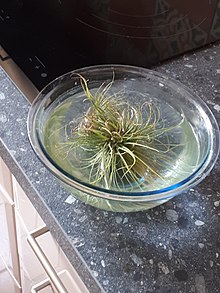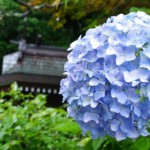Air plants, scientifically known as Tillandsia, are unique and fascinating plants that require very little care compared to traditional houseplants. However, this doesn’t mean they can thrive on air alone. Like all plants, air plants need nutrients to grow and flourish. In this guide, we’ll explore the world of air plant fertilization, covering essential topics such as when, how, and with what to fertilize your air plants.
Understanding Air Plants
What are Air Plants?
Air plants, or Tillandsia, are epiphytic plants that belong to the Bromeliad family. Unlike traditional plants, air plants do not need soil to grow. They anchor themselves to other surfaces such as trees, rocks, and even telephone wires, using their specialized trichomes to absorb water and nutrients from the air.
Why Do Air Plants Need Fertilization?
Although air plants can absorb nutrients from the air and water, they still require additional nutrients to thrive. In their natural habitats, they obtain these nutrients from decaying leaves and insects. When grown indoors or in less nutrient-rich environments, providing fertilization becomes crucial for their health and growth.
When to Fertilize Air Plants
Seasonal Timing
Air plants have a natural growth cycle, and their need for nutrients varies throughout the year. In general, it’s best to fertilize them during their active growth period, which typically occurs in spring and summer. During this time, air plants are actively producing new leaves and roots, making them more receptive to nutrients.
Signs Your Air Plants Need Fertilizing
If you notice any of the following signs, it’s an indication that your air plants may benefit from fertilization:
- Slow growth or stunted development
- Faded or pale green coloration
- Reduced flowering or lack of flowers
- Increased leaf shedding
Choosing the Right Fertilizer
Types of Air Plant Fertilizers
When it comes to fertilizing air plants, you have several options:
Air Plant-specific Fertilizer
This type of fertilizer is specially formulated to meet the unique nutrient requirements of air plants. It typically contains essential nutrients like nitrogen, phosphorus, and potassium (N-P-K) in a balanced ratio.
Bromeliad Fertilizer
Since air plants belong to the Bromeliad family, bromeliad fertilizers can also work well. Look for a balanced N-P-K ratio and micronutrients like iron and magnesium.
Tillandsia Fertilizer
Some fertilizers are specifically labeled for Tillandsia, making them suitable for air plants.
Organic vs. Synthetic Fertilizers
You have the choice between organic and synthetic fertilizers:
Organic Fertilizers
These are derived from natural sources and release nutrients slowly. They are less likely to cause over-fertilization but may not provide nutrients as quickly as synthetics.
Synthetic Fertilizers
These are chemically formulated and provide nutrients rapidly. However, they can be more challenging to use without over-fertilizing your air plants.
How to Fertilize Air Plants
Soaking Method
- Fill a container with water. Use non-chlorinated water, as chlorine can harm your air plants.
- Add the recommended amount of air plant fertilizer to the water. Follow the instructions on the fertilizer packaging for the correct dosage.
- Place your air plants in the container, ensuring they are fully submerged. Let them soak for about 30 minutes to an hour.
- Remove the air plants from the water and shake off any excess moisture.
- Allow the air plants to dry completely before returning them to their display.
Foliar Feeding Method
- Mix the recommended amount of air plant fertilizer with water in a spray bottle. Again, follow the fertilizer packaging instructions for the correct dosage.
- Lightly mist your air plants with the fertilizer solution. Ensure that you cover all parts of the plant, including the leaves and base.
- Allow the air plants to dry completely before placing them back in their display.
Frequency of Fertilization
- For most air plants, fertilize them every 2-4 weeks during the growing season (spring and summer).
- Reduce or eliminate fertilization during the dormant season (fall and winter) when air plants are not actively growing.
Caring for Your Air Plants After Fertilization
Proper Watering Techniques
In addition to fertilization, proper watering is essential for air plant health. Submerge your air plants in water for 20-30 minutes every 1-2 weeks, allowing them to absorb moisture.
Light Requirements
Air plants thrive in bright, indirect light. Place them near a window or under fluorescent lights to ensure they get the right amount of light for photosynthesis.
Temperature Considerations
Air plants prefer temperatures between 50°F and 90°F (10°C – 32°C). Avoid exposing them to extreme cold or heat.
Common Fertilization Mistakes
Over-Fertilization
Over-fertilization can harm your air plants. Always follow the recommended dosage on the fertilizer packaging, and never exceed the suggested frequency of application.
Using the Wrong Fertilizer
Choosing the wrong type of fertilizer or one with an imbalanced N-P-K ratio can lead to nutrient deficiencies or excesses. Stick to air plant-specific or bromeliad fertilizers for best results.
Neglecting Other Care Factors
Fertilization is just one aspect of air plant care. Neglecting proper watering, light, and temperature requirements can lead to poor overall health, even if you fertilize correctly.
FAQs (Frequently Asked Questions)
Q1: Can I use regular plant fertilizer on air plants?
A1: It’s best to use a fertilizer formulated for air plants, bromeliads, or Tillandsia to ensure the right balance of nutrients.
Q2: How do I know if I’ve over-fertilized my air plants?
A2: Signs of over-fertilization include brown or burnt tips on the leaves, excessive leaf shedding, or a yellowish tint to the plant.
Q3: Can I use rainwater for soaking my air plants?
A3: Yes, rainwater is an excellent choice, as it’s naturally free of chlorine and minerals that can harm air plants.
Q4: Do air plants need to be fertilized year-round?
A4: No, air plants should be fertilized primarily during their active growth season (spring and summer). Reduce or eliminate fertilization during their dormant period (fall and winter).
Conclusion
Fertilizing air plants is an essential part of their care routine. By understanding when and how to fertilize them, choosing the right fertilizer, and avoiding common mistakes, you can ensure your air plants remain healthy and vibrant. Remember, while air plants are low-maintenance, they still require proper attention to thrive in your indoor environment.





